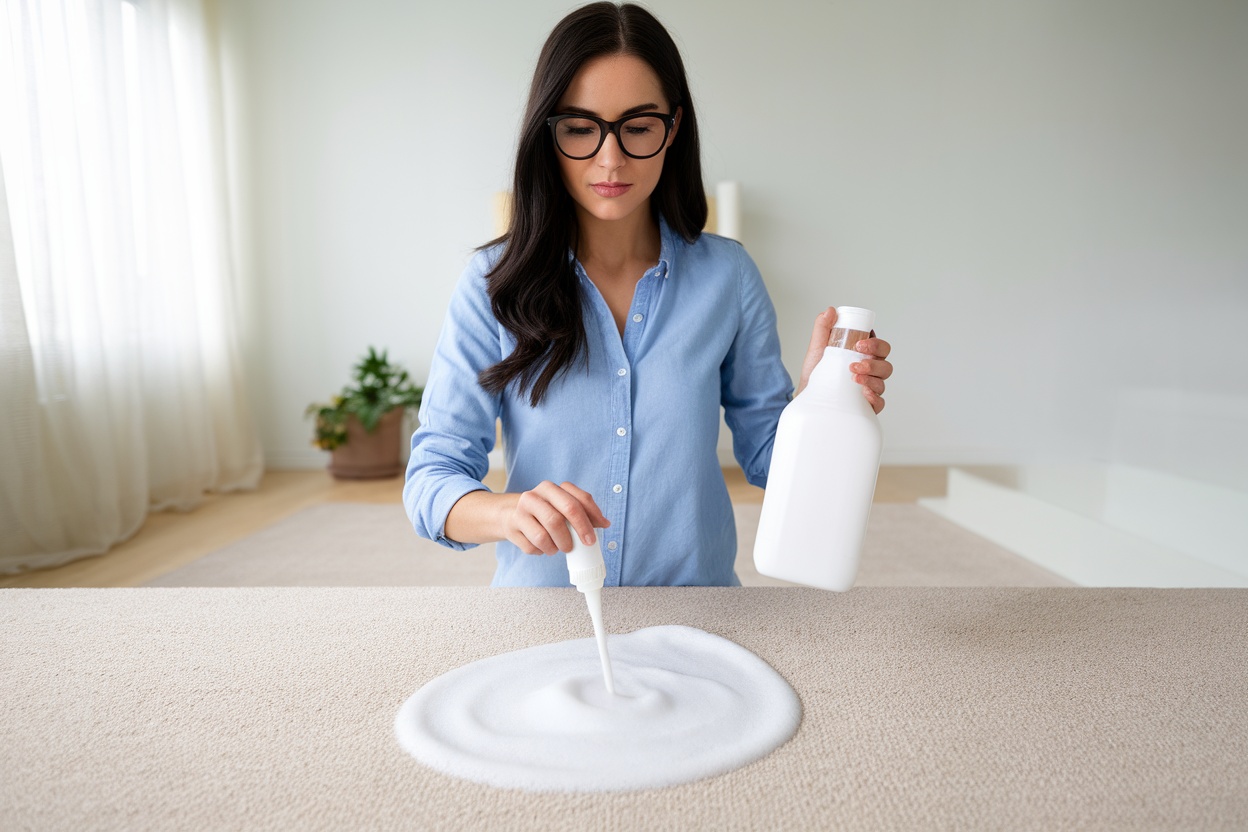
Cat pee smell can transform your comfortable home into an unpleasant environment that affects your daily life. The ammonia-based compounds in cat urine create persistent odors that penetrate deep into carpet fibers, furniture, and other surfaces throughout your house.
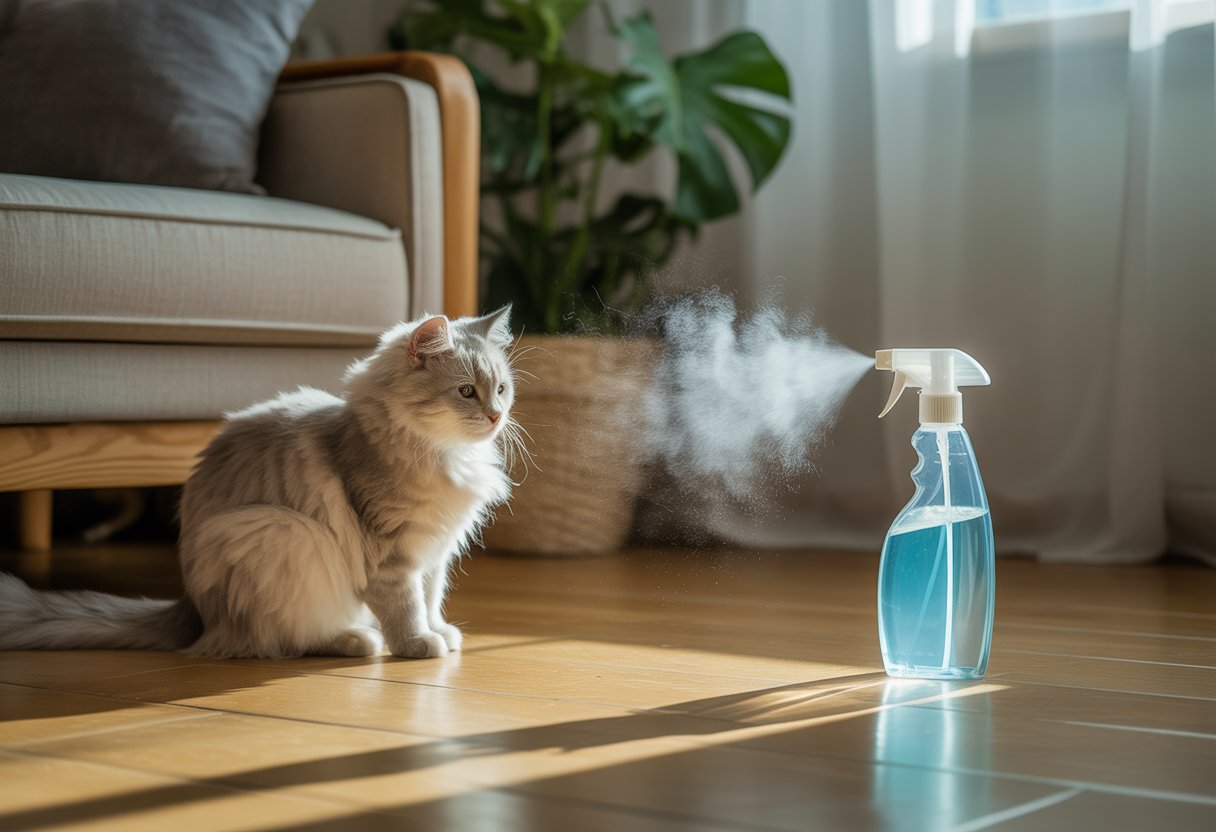
Complete removal of cat pee smell requires immediate action combined with the right cleaning techniques and products to break down odor-causing bacteria. Fresh accidents respond well to quick treatment, while older stains need more intensive approaches to eliminate the smell forever.
Whether you’re dealing with a single incident on your couch or recurring issues across multiple rooms, you can successfully tackle this problem using proven DIY methods and home remedy solutions. The key lies in understanding what causes the odor and applying systematic cleaning strategies that address both surface stains and deep-seated smells.
Immediate Actions for Fresh Cat Pee Smell Removal
Quick action prevents cat urine from penetrating deeper into surfaces and becoming harder to eliminate. The first 15 minutes are critical for successful odor removal.
Blotting and Absorbing Urine
Never rub or scrub fresh cat urine. This pushes the liquid deeper into fibers and spreads the contaminated area.
Press paper towels firmly against the wet area using downward pressure. Replace towels frequently as they become saturated.
For carpets, place several layers of clean towels over the spot. Step on them to absorb maximum liquid from the padding underneath.
Work from outside edges toward the center to prevent spreading. Continue blotting until towels come up nearly dry.
On hard surfaces, use absorbent materials like newspaper or cloth rags. Dispose of all contaminated materials immediately in sealed bags.
Neutralizing with Household Solutions
Mix equal parts white vinegar and water in a spray bottle. Spray the affected area thoroughly and let sit for 5 minutes.
Blot the vinegar solution with clean towels. The acid neutralizes ammonia compounds in cat urine.
For carpets: Pour the vinegar solution directly onto the spot. Use enough liquid to reach the same depth as the original urine.
Create a paste with baking soda and water. Apply over the treated area and let dry completely, then vacuum.
Avoid using bleach or ammonia-based cleaners, which can react with urine compounds and worsen odors.
Avoiding Common Mistakes
Steam cleaning fresh urine sets the odor permanently. Heat bonds protein molecules to fibers, making removal nearly impossible.
Don’t use regular carpet shampoos or detergents. These often contain ingredients that interact poorly with urine chemistry.
Avoid covering wet areas with towels and leaving them. This traps moisture and allows bacteria to multiply.
Test cleaning solutions on hidden areas first. Some fabrics may discolor or damage with acidic treatments.
Don’t assume the area is clean because you can’t smell it. Cat urine contains compounds that become more noticeable over time if not properly neutralized.
Deep Cleaning Strategies for Persistent Odors
Enzymatic cleaners break down uric acid crystals that standard cleaners cannot eliminate, while specialized techniques for carpets and upholstery target odor-causing bacteria embedded deep within fibers.
Using Enzymatic Cleaners
Enzymatic cleaners contain specific bacteria that digest the proteins and acids in cat urine. These cleaners work differently than traditional cleaning products because they actually break down the odor-causing compounds rather than just masking them.
Apply enzymatic cleaner to the affected area and let it sit for 10-15 minutes. The enzymes need time to penetrate the surface and begin breaking down the uric acid crystals.
Blot the area with clean towels rather than rubbing. Rubbing can push the urine deeper into porous materials like wood or fabric.
For hard surfaces like tile or hardwood, spray the cleaner generously and wipe with a microfiber cloth. Make sure to clean grout lines thoroughly as urine can seep into these porous areas.
Reapply the enzymatic cleaner if you can still detect odor after the first treatment. Some heavily soiled areas may require multiple applications over several days.
Cleaning Carpets and Rugs
Remove as much liquid as possible using paper towels or a wet vacuum before applying any cleaning solution. Press firmly to absorb urine from the carpet padding underneath.
Mix equal parts white vinegar and water in a spray bottle. Spray the mixture onto the stained area and let it sit for 5 minutes before blotting with clean towels.
Follow the vinegar treatment with an enzymatic cleaner specifically designed for carpets. Pour the cleaner directly onto the stain and work it into the fibers using a clean brush.
Cover the treated area with a clean towel and place a heavy object on top. This helps the cleaner penetrate deeper into the carpet padding where odor-causing bacteria hide.
Allow the area to air dry completely, which may take 24-48 hours. Use fans to speed up the drying process and prevent mold growth.
For severe odors, you may need to replace the carpet padding underneath the affected area.
Treating Upholstery and Furniture
Test any cleaning solution on a hidden area first to ensure it won’t damage or discolor the fabric. Wait 24 hours to check for any adverse reactions.
For washable fabric covers, remove them and wash in cold water with enzyme-based detergent. Add one cup of white vinegar to the rinse cycle to help neutralize odors.
Non-removable upholstery requires careful application of enzymatic cleaner. Use a spray bottle to apply the cleaner lightly, avoiding oversaturation that could damage the furniture.
Blot treated areas with clean, dry towels and use a fan to promote air circulation. Leather furniture needs special leather-safe enzymatic cleaners to avoid cracking or discoloration.
For wooden furniture, sand lightly if the urine has penetrated the wood grain. Apply enzymatic cleaner with a cloth and seal with appropriate wood finish once completely dry.
Replace foam cushions if the odor persists after multiple cleaning attempts, as urine can permanently saturate dense foam materials.
Specialized Techniques for Hard-to-Reach Areas
Cat urine penetrates deep into porous surfaces and tight spaces where standard cleaning methods fail. These areas require targeted approaches using specialized tools and stronger enzymatic solutions to neutralize embedded odors completely.
Removing Odor from Hardwood and Tile
Hardwood floors with cat urine damage need immediate attention to prevent permanent staining. Remove existing finish or sealant from affected areas using fine-grit sandpaper. The wood fibers absorb urine deeply, making surface cleaning ineffective.
Apply concentrated enzymatic cleaner directly to bare wood. Let it penetrate for 24-48 hours under plastic sheeting. This extended contact time allows enzymes to break down uric acid crystals embedded in the grain.
For tile floors:
- Remove grout completely from affected joints
- Apply enzymatic cleaner to subfloor if urine penetrated
- Replace contaminated grout with fresh material
- Seal tile and grout after treatment
Wood may require multiple enzyme treatments before odor elimination. Test a small area first to ensure the wood can handle the moisture exposure without warping.
Deodorizing Walls and Baseboards
Wall contamination occurs when cats spray vertically or when urine spreads from flooring. Remove baseboards to access the wall-floor junction where odor concentrates. Check for urine penetration behind baseboards using a blacklight.
Prime affected drywall with odor-blocking primer after enzymatic treatment. Standard paint alone cannot seal persistent odors. Remove and replace heavily saturated drywall sections rather than attempting to clean them.
Treatment steps:
- Apply enzymatic cleaner with foam brush
- Allow 12-hour drying time
- Apply odor-blocking primer
- Repaint with quality interior paint
Baseboards may need replacement if wood has absorbed significant urine. Vinyl or composite baseboards resist absorption better than natural wood for future protection.
Handling Cat Pee Smell in Laundry and Fabrics
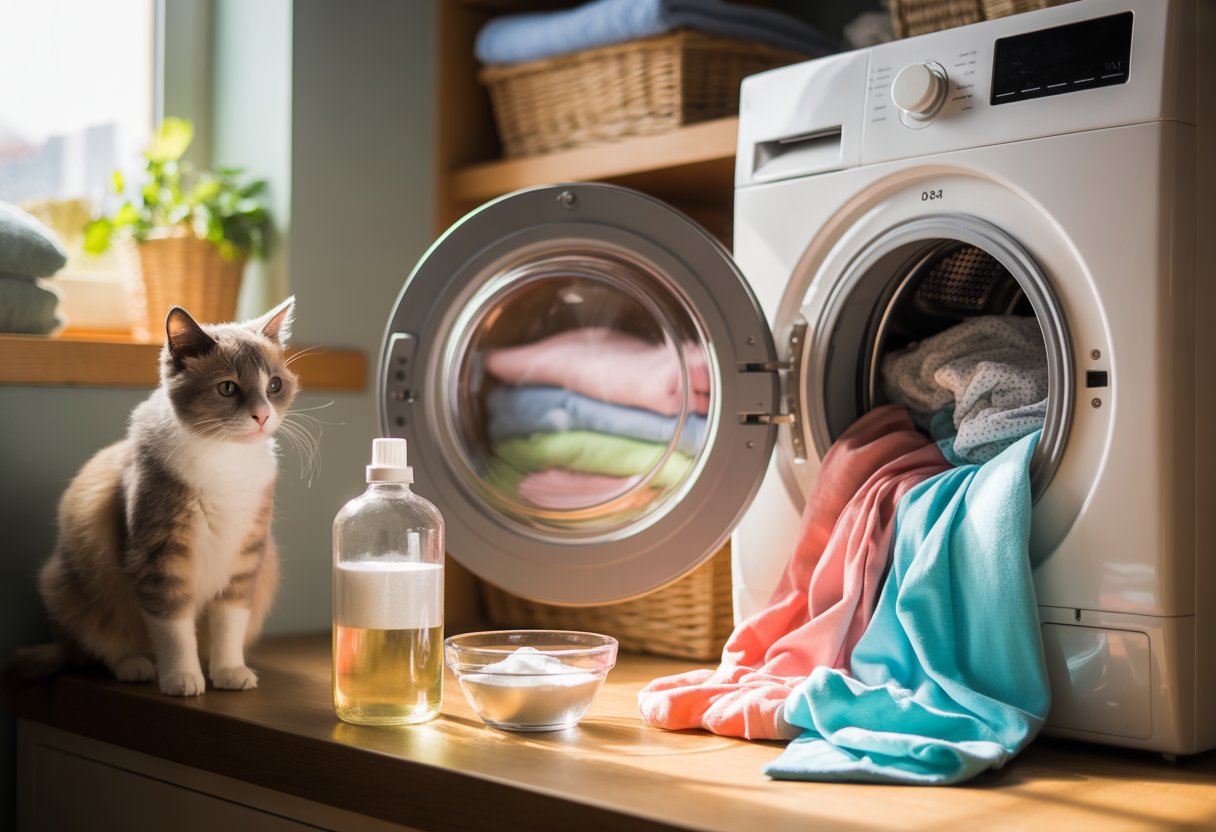
Cat urine requires immediate treatment with enzyme cleaners and specific washing techniques to break down odor-causing compounds. Cold water rinses prevent protein setting, while vinegar and baking soda neutralize ammonia odors.
Washing Bedding and Clothing
Rinse contaminated items immediately with cold water to dilute the urine. Hot water sets protein stains and makes odors harder to remove.
Pre-treat the affected area with an enzyme cleaner designed for pet urine. Apply the product generously and let it sit for 15-30 minutes before washing.
Add one cup of white vinegar to your washing machine’s rinse cycle. The acid neutralizes ammonia compounds that cause the distinctive cat urine smell.
Washing steps:
- Use cold water setting
- Add enzyme detergent or regular detergent plus enzyme cleaner
- Include 1 cup white vinegar in rinse cycle
- Air dry completely before checking for remaining odor
If odor persists after the first wash, repeat the process with baking soda added to the wash cycle. Use ½ cup baking soda along with your regular detergent.
Treating Mattresses and Pillows
Blot fresh urine immediately with paper towels, pressing firmly to absorb liquid from deep within the material. Avoid rubbing, which spreads the stain.
Create a cleaning solution using equal parts water and white vinegar. Spray the affected area thoroughly and let it penetrate for 10-15 minutes.
Apply enzyme cleaner specifically formulated for pet urine. These products break down uric acid crystals that cause persistent odors.
Treatment process:
- Blot excess moisture
- Apply vinegar solution
- Wait 10-15 minutes
- Apply enzyme cleaner
- Allow 30 minutes contact time
- Blot with clean towels
Sprinkle baking soda over the treated area once it’s slightly damp. Let it sit for several hours or overnight to absorb remaining odors and moisture.
Vacuum the baking soda thoroughly. Use a fan or dehumidifier to speed drying and prevent mold growth in the mattress core.
Long-Term Prevention of Cat Pee Odor
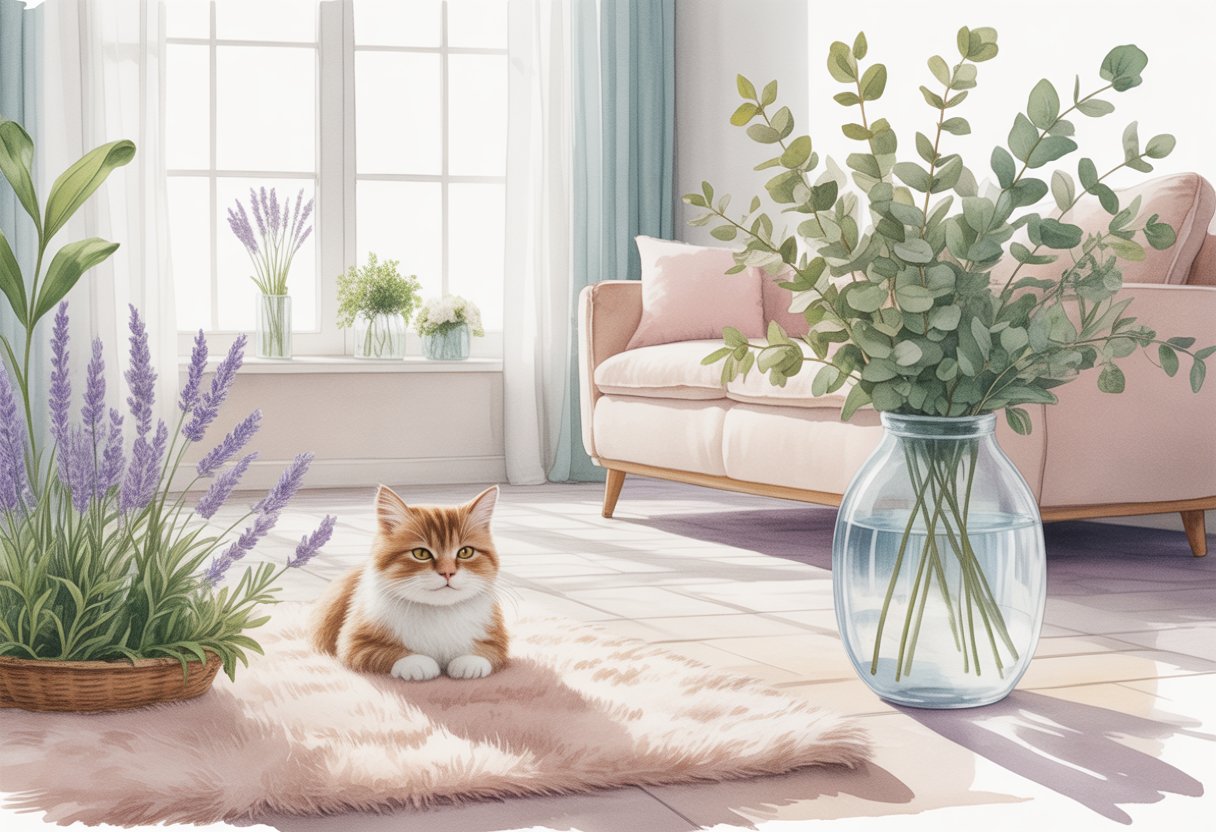
Maintaining a clean litter box environment and addressing the root causes of inappropriate urination are the most effective strategies for preventing recurring odor issues. These preventive measures require consistent effort but eliminate the need for repeated cleaning cycles.
Litter Box Maintenance
Clean your litter box daily by removing clumps and solid waste. This prevents ammonia buildup that creates strong odors and discourages your cat from using the box.
Replace all litter completely every 7-10 days for clumping varieties and every 3-5 days for non-clumping types. Wash the box with mild soap and water during each complete change.
Essential maintenance schedule:
- Daily: Remove waste and clumps
- Weekly: Complete litter replacement
- Monthly: Deep clean with enzyme cleaner
Use unscented, clumping litter with fine granules. Cats prefer textures similar to sand and may avoid heavily perfumed options.
Maintain 2-3 inches of litter depth. Shallow litter prevents proper clumping while excessive depth wastes product and may feel unstable to your cat.
Place boxes in quiet, easily accessible locations away from food and water bowls. Avoid high-traffic areas or spaces with loud appliances.
Identifying and Addressing the Cause of Accidents
Medical issues cause approximately 30% of inappropriate urination cases. Schedule a veterinary examination if your cat suddenly stops using the litter box or shows signs of straining.
Common medical triggers include urinary tract infections, bladder stones, kidney disease, and arthritis that makes box access painful. Early treatment prevents accidents and protects your cat’s health.
Stress-related causes to address:
- Changes in household routine
- New pets or family members
- Moving furniture or litter box location
- Conflicts between multiple cats
Provide one litter box per cat plus one additional box. Multiple cats sharing insufficient boxes often leads to territorial marking and accidents.
Clean accident sites immediately with enzyme-based cleaners. Residual odors attract cats back to the same spots for future elimination.
Eliminating Lingering Odors and Improving Air Quality
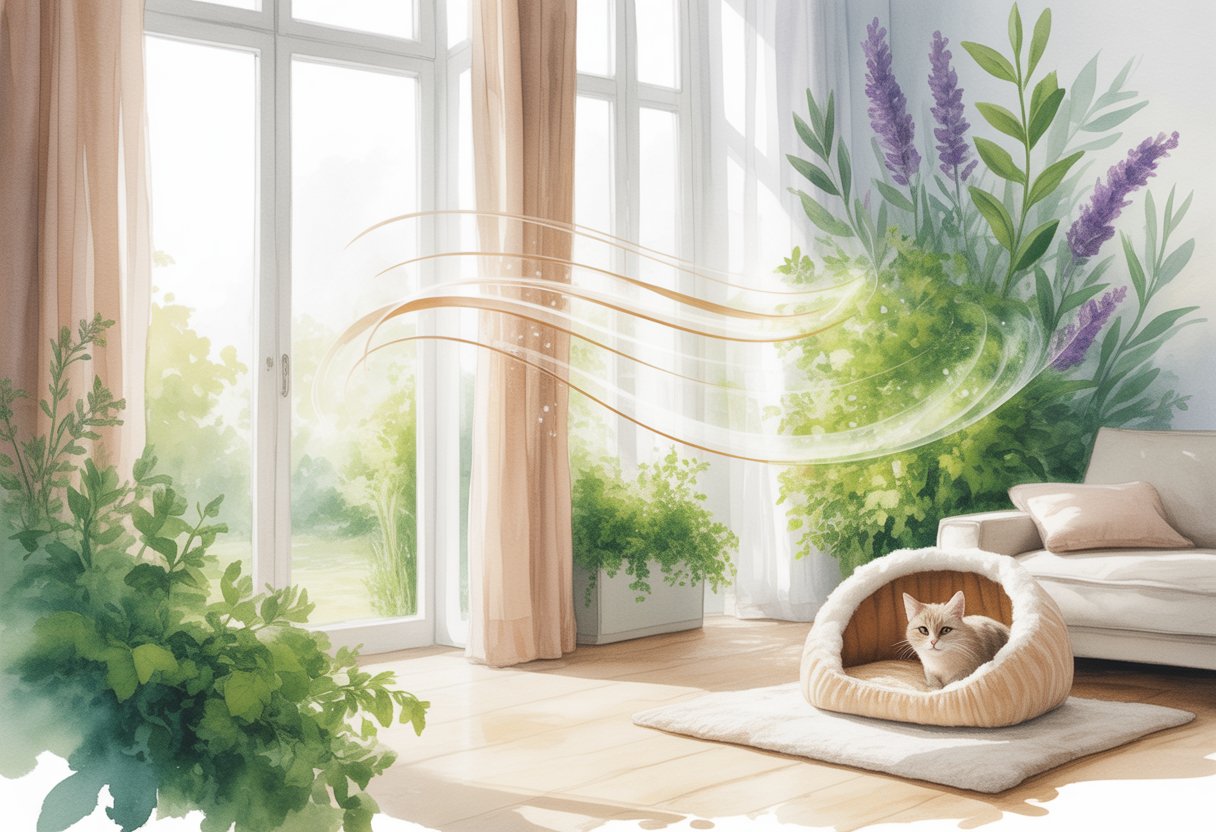
Air purifiers with activated carbon filters effectively neutralize ammonia molecules from cat urine. Natural remedies like baking soda and white vinegar provide additional odor control while improving overall air freshness.
Using Air Purifiers and Odor Absorbers
Air purifiers with HEPA and activated carbon filters remove both particles and odor molecules from cat urine. Position units in rooms where accidents occurred for maximum effectiveness.
Activated carbon filters specifically target ammonia compounds. Replace filters every 3-6 months depending on usage and odor severity.
Commercial odor absorbers include:
- Activated charcoal bags
- Zeolite crystals
- Enzymatic air fresheners
Place multiple small bags of activated charcoal around affected areas. These absorb moisture and odor molecules continuously for 30-60 days.
UV air purifiers break down odor-causing bacteria. These work best in enclosed spaces like basements or small rooms.
Ozone generators eliminate stubborn odors but require vacant rooms during operation. Use only as directed and ensure proper ventilation afterward.
Natural Remedies for Freshening the Home
Baking soda absorbs odors when sprinkled on carpets and left overnight. Vacuum thoroughly the next morning to remove residue.
White vinegar neutralizes ammonia naturally. Place shallow bowls around rooms for 24-48 hours to eliminate lingering smells.
Coffee grounds absorb odors effectively. Spread used grounds in shallow containers and replace every 2-3 days.
Fresh air circulation prevents odor buildup. Open windows and use fans to create cross-ventilation in affected rooms.
Essential oils like lavender or eucalyptus mask remaining odors. Add 10-15 drops to cotton balls and place near problem areas.
Houseplants like spider plants and peace lilies naturally filter air. Position several plants in rooms where odors persist.

